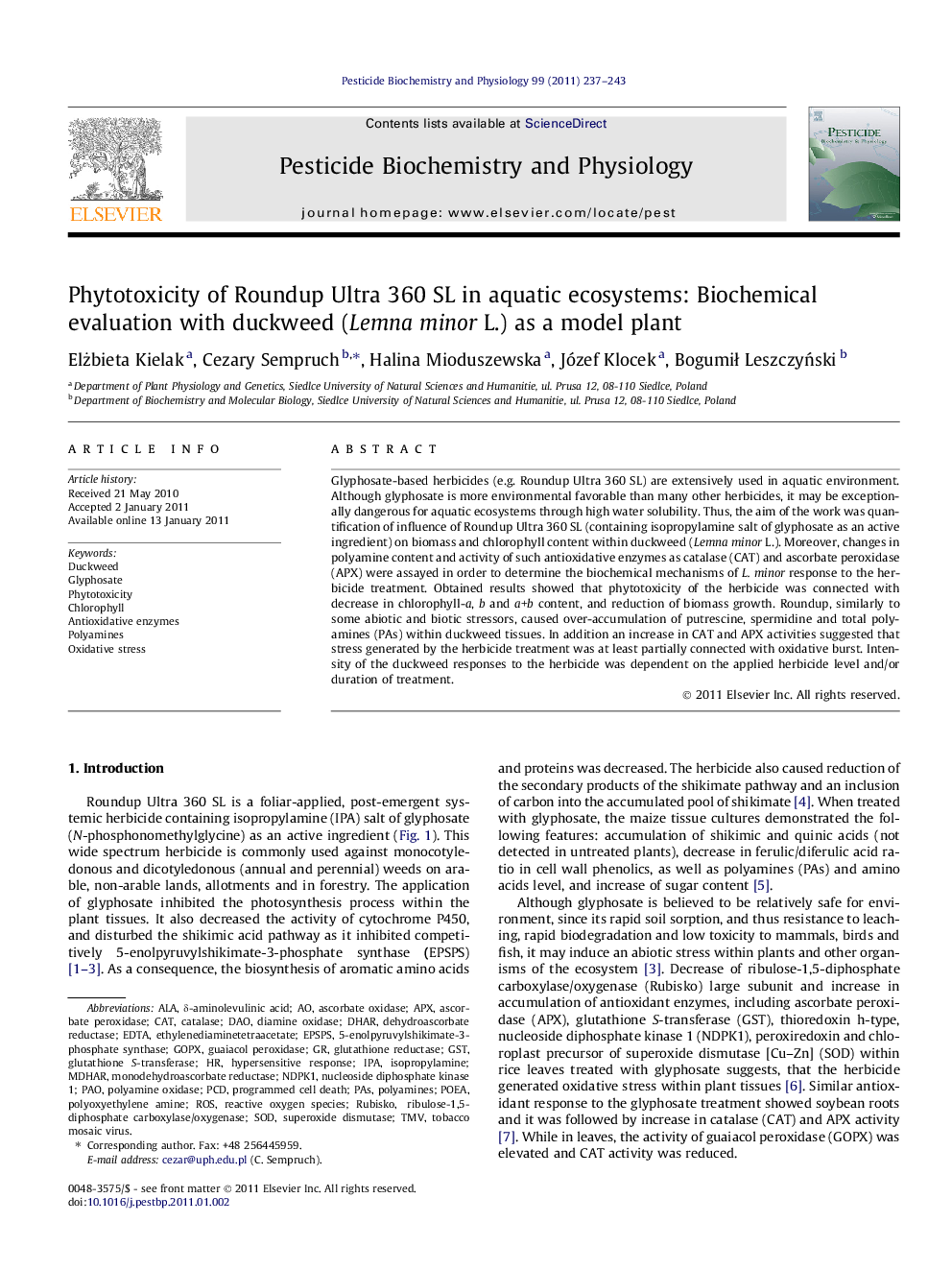| Article ID | Journal | Published Year | Pages | File Type |
|---|---|---|---|---|
| 10837470 | Pesticide Biochemistry and Physiology | 2011 | 7 Pages |
Abstract
⺠Influence of herbicide on duckweed biomass and chlorophyll content was quantified. ⺠Participation of polyamines, CAT and APX in response to herbicide was determined. ⺠The herbicide caused decrease of biomass and chlorophyll level. ⺠Polyamines were accumulated and enzymes were activated after the herbicide treatment. ⺠Intensity of the changes was dependent on herbicide dose and duration of treatment.
Keywords
ALAMDHARPOEAdehydroascorbate reductasemonodehydroascorbate reductasePAOCATDHARIPAEPSPsTMVGSTPCDAPX5-enolpyruvylshikimate-3-phosphate synthaseROSascorbate oxidaseAntioxidative enzymesEDTAethylenediaminetetraacetateδ-aminolevulinic acidIsopropylamineOxidative stressDAODuckweedDiamine oxidaseChlorophyllSODSuperoxide dismutasePhytotoxicityProgrammed cell deathPASTobacco mosaic virusHypersensitive responseascorbate peroxidasePolyaminespolyamine oxidaseCatalaseglutathione S-transferaseglutathione reductaseGlyphosateguaiacol peroxidaseReactive oxygen species
Related Topics
Life Sciences
Agricultural and Biological Sciences
Agronomy and Crop Science
Authors
Elżbieta Kielak, Cezary Sempruch, Halina Mioduszewska, Józef Klocek, BogumiÅ LeszczyÅski,
